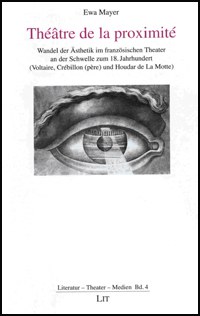An Aesthetics of Proximity? – Theatre Upset at the Turn of the 18th Century
DOI:
https://doi.org/10.22029/ko.2009.489Abstract
Ewa Mayer’s study Théâtre de la proximité concentrates on an oft neglected period in French and, consequently, European theatre, namely the transition between classicism and Enlightenment in the late 17th and the early 18th century. At that time dramatists such as Voltaire, Crébillon (père) and Houdar de La Motte tried to establish reformatory ideas in their poetological as well as dramatic writings which Mayer collectively calls 'Théâtre de la proximité'. Certain dramatists developed this aesthetics of proximity to surmount the classicist ideals of objectivity and universality and bring the subjectivity of both the dramatis personae and the spectators to the forefront – the aim being an (ideally) complete, generally emotional identification between stage players and audience members.

Downloads
Published
Issue
Section
License
All articles (not book covers) in KULT_online from issue 50 on are published under the license Creative Commons Attribution 4.0. All published articles may be reused under the conditions of the license, particularly for commercial purposes and through editing the article (Human-Readable Summary). All authors (have) permitted the publication under the above mentioned license. There is no copyright transfer towards KULT_online. For all book covers specific rights might be reserved, please contact the respective publisher for any lawful reuse. All contributions published in issue 1-49 of KULT_online are free available online and protected by the German Copyright Law.



